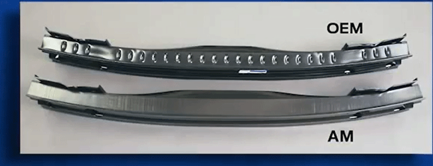Imitation parts are typically new parts that have been made by someone other than your vehicle manufacturer.
This means that someone not authorized by your vehicle’s manufacturer has tried to duplicate a part to be used in repairing your vehicle.
Since the part to be used in repairing your vehicle was not produced by the auto maker, it hasn’t been made according to the specifications mandated by the auto maker, it wasn’t produced on the same equipment, and often, is not made from identical materials.
As a result, these parts often do not fit properly, may or may not wear as well, and may interfere with the performance and safety features, like airbags and their deployment.
In 2001, the federal Government Accountability Office (“GAO”) reviewed issues that had arisen about the use of these imitation parts in the repair of motor vehicles. In its report, the GAO concluded that NHTSA had almost no ability to recall imitation parts installed on consumers’ vehicles if they were found to be defective. GAO also recommended that NHTSA include testing of these imitation parts in its program.
In 2010, the collision industry became so concerned about insurers demanding the use of certain imitation structural parts in the repairs of vehicles that the repairers began performing testing demonstrations at national collision industry meetings to alert fellow repairers of the potential dangers of using these parts.
Ford Motor Company then performed a series of tests confirming that the tested parts are not of of “like, kind and quality” as represented by the imitation parts makers and Insurers and typically required by state law.
Click Here or above to see what 7/100’s of a difference means to the deployment of your safety restraint system airbag.

